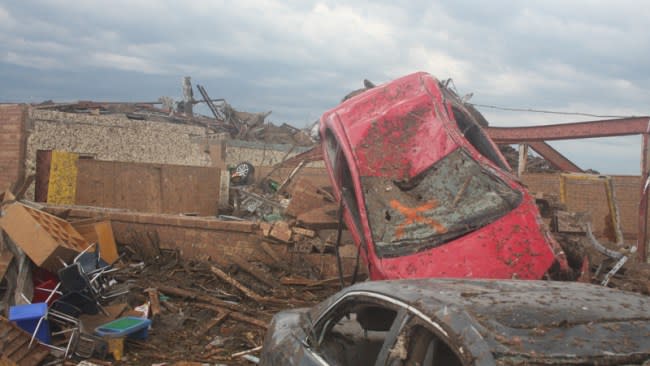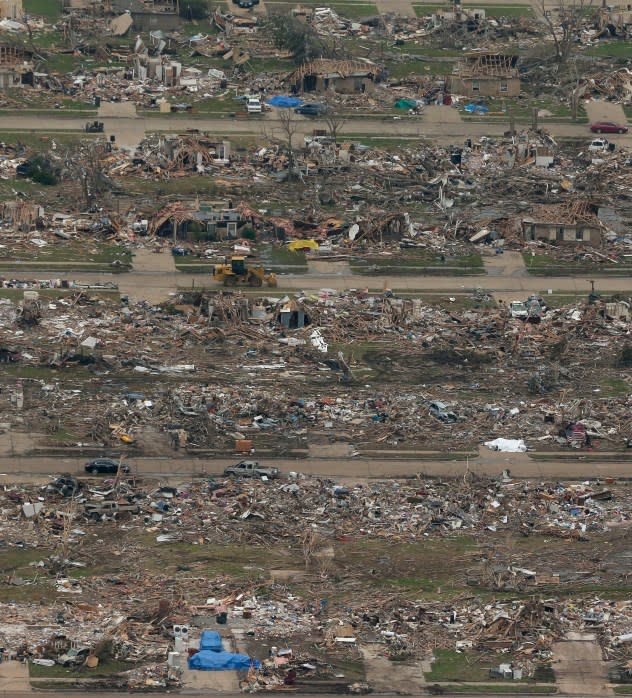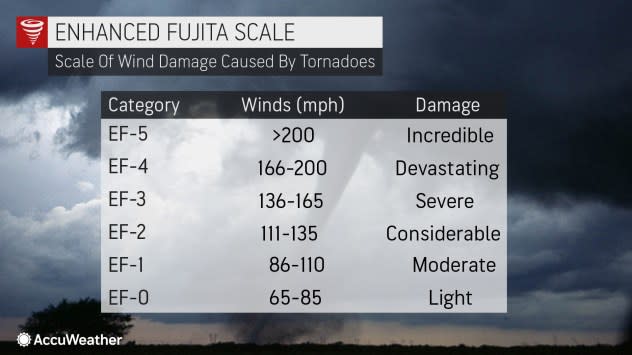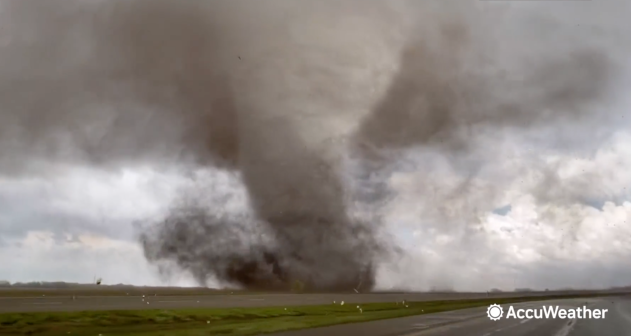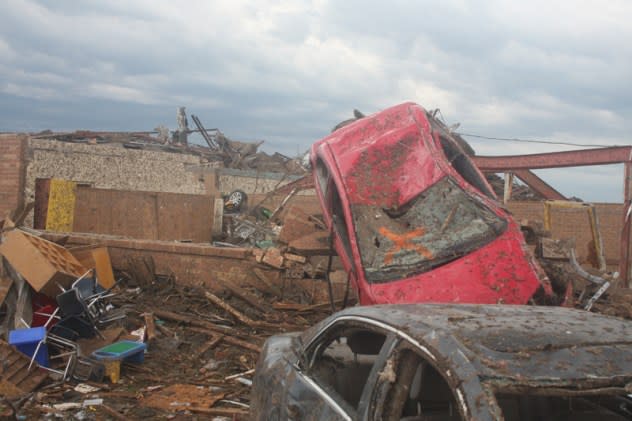EF5 tornado ‘drought' reaches 11 years, longest in history
An EF5 tornado is one of the most catastrophic weather events on Earth. Monsterous twisters of this magnitude can destroy entire neighborhoods in the blink of an eye, grow to be more than a mile wide and pack winds over 200 mph -- stronger than any Category 5 hurricane on record across the Atlantic basin.
On May 20, 2013, an extremely powerful tornado destroyed a huge part of Moore, Oklahoma. Eleven years later, it remains the most recent tornado to be rated EF5, the strongest possible rating on the Enhanced Fujita Scale. The 11-year gap is the longest since official U.S. records began in 1950.
 |
Tornado-damaged areas of Moore, Okla. are seen in aerial photos during a mission flown by the Civil Air Patrol Sunday, May 26, 2013. Cleanup continues after a huge tornado roared through the Oklahoma City suburb Monday, flattening a wide swath of homes and businesses. (AP Photo/Charlie Riedel) |
Before the Moore tornado, the blockbuster tornado season in 2011 led to the confirmation of five EF5 twisters, including the Joplin, Missouri, EF5 that killed 161 people. A total of 50 tornadoes have been rated F5/EF5 since records began in the United States in 1950.
Because most weather instruments can't survive tornadoes, the EF scale estimates tornado strength based on NWS staff investigating damage indicators.
Meteorologist Bob Henson said in 2023 that the current EF5 "drought" is hard to explain since damage estimates can be subjective. Damage to a "well-constructed building" is the most common factor that helps the National Weather Service (NWS) confirm an EF5, yet many homes in the U.S. do not meet that criteria.
 |
Henson quotes Tanya Brown-Giammanco, director of Disaster & Failure Studies at the National Institute of Standards and Technology, who says that many houses are missing key features to be considered wind resistant, disqualifying them from being used to determine if a twister reached EF5 status.
The Enhanced Fujita system is not likely to change from a ground-damage-based scale, Henson says, but new standards may be implemented to improve rural damage assessments based on damage to wind turbines, irrigation systems, farm silos, churches and passenger vehicles.
 |
A large tornado tracks past a highway near Lincoln, Nebraska, on April 26, 2024. (Aaron Jayjack) |
The National Windstorm Impact Reduction Program at NIST is developing these standards, which would have to be adopted by NOAA's Storm Prediction Center to change the Enhanced Fujita Scale.
Radar data, by definition measured above ground, cannot be used to rate tornadoes on the EF scale. This precedent was reaffirmed by the El Reno tornado on May 31, 2013, which tracked just south of El Reno, Oklahoma. At peak strength, Doppler radar measured winds over 300 mph.
The National Weather Service initially rated El Reno as an EF5, but subsequent damage investigations were unable to find damage indicators above EF3 since it largely tracked over open fields. Because of the damage found, the El Reno tornado, despite being the largest twister ever recorded at 2.6 miles wide, was confirmed as an EF3.
 |
Crushed vehicles were amongst the debris left behind at Plaza Towers Elementary School from an EF5 tornado that struck Moore, Oklahoma, in May of 2013. |
Want next-level safety, ad-free? Unlock advanced, hyperlocal severe weather alerts when you subscribe to Premium+ on the AccuWeather app. AccuWeather Alerts™ are prompted by our expert meteorologists who monitor and analyze dangerous weather risks 24/7 to keep you and your family safer.

